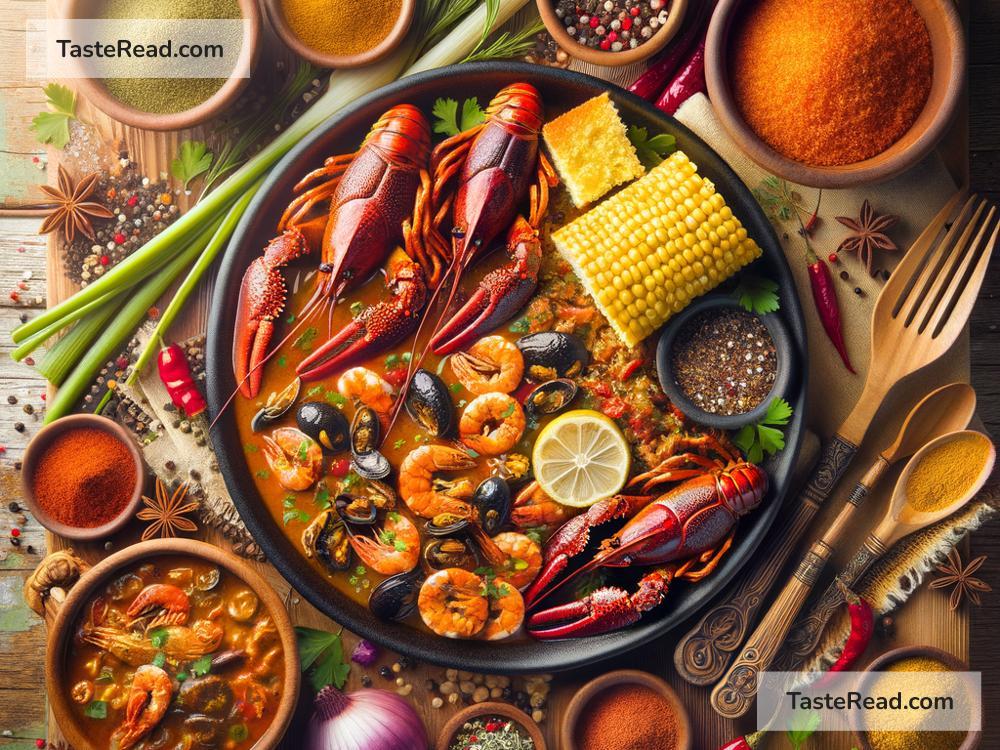Celebrating the Fusion of Cajun and Creole Culinary Traditions
When it comes to food, few places in the world can hold a candle to Louisiana. This southern U.S. state is famous for its rich, bold, and flavorful dishes that bring people together and tell stories about history and culture. At the heart of Louisiana’s cuisine are two distinct yet intertwined cooking traditions: Cajun and Creole. Both have unique characteristics, but together they’ve created something extraordinary that has captivated food lovers from all over the globe.
Let’s dive into the world of Cajun and Creole cuisine and learn what makes them so special.
What are Cajun and Creole Traditions?
To truly appreciate the recipes and flavors of Cajun and Creole food, we first need to understand their roots.
Cajun Cuisine: Cajun cooking comes from the French-speaking Acadians, who were originally from eastern Canada. These settlers were forced to leave their homeland in the 18th century and eventually made their way to Louisiana. The Acadians had to adapt to their new environment, using local ingredients like rice, catfish, crawfish, and wild game to create hearty and rustic dishes.
Cajun cooking is often thought of as “country food.” It’s simple and relies on layers of flavor created from slow cooking, seasoning, and fresh ingredients. One of the key techniques in Cajun cuisine is the use of the “Holy Trinity” – a combination of onion, bell pepper, and celery – which serves as the base for many dishes.
Creole Cuisine: Creole cooking, on the other hand, has a more cosmopolitan origin. It represents a blend of French, Spanish, African, Caribbean, and Native American influences. Because Creole began in New Orleans, a bustling port city, it incorporated ingredients and ideas from many different cultures. Over time, Creole food became associated with elegance and sophistication.
Unlike Cajun dishes, Creole cuisine often includes a tomato base, as well as a wider array of spices, sauces, and seafood. While Cajun food is often spicier, Creole food tends to be more refined and colorful.
Common Ingredients in Cajun and Creole Dishes
The ingredients used in both Cajun and Creole dishes reflect the bounty of Louisiana. Here are some essentials:
- Seafood: Both traditions rely heavily on seafood like shrimp, crawfish, crab, and fish, which are abundant in Louisiana’s waters.
- Rice: Rice is a staple in many Cajun and Creole dishes, from jambalaya to étouffée.
- Spices: Bold seasoning is key to these cuisines. Common spices include garlic, paprika, cayenne pepper, thyme, and bay leaves.
- Sausage: Andouille sausage, a spicy smoked sausage, is frequently used in stews and soups.
- Vegetables: The “Holy Trinity” of onion, bell pepper, and celery appears in nearly every recipe.
Signature Dishes You Have to Try
Louisiana is home to iconic foods that highlight the fusion of Cajun and Creole traditions. Here are a few must-try dishes:
1. Gumbo: Gumbo is a savory stew that blends influences from both Cajun and Creole cultures. It features a flavorful roux (a mixture of flour and fat), the Holy Trinity, and a mix of meat or seafood, all simmered with spices. Creole gumbo often has tomatoes, while Cajun gumbo sticks to a deeper roux flavor.
2. Jambalaya: This dish is Louisiana’s take on paella, combining rice, meat (like sausage or chicken), seafood, and spices in one pot. Creole jambalaya usually contains tomatoes, while Cajun jambalaya omits them and is darker in color.
3. Crawfish Étouffée: Étouffée is a dish featuring crawfish (or shrimp) smothered in a buttery, spicy sauce made with vegetables and served over rice. This soulful recipe is where Cajun and Creole flavors truly shine.
4. Red Beans and Rice: A simple and comforting dish made with red beans, sausage, and rice. Though originally Creole, it has been adopted by Cajun cooks as well.
5. Beignets: While primarily Creole in origin, these fluffy, powdered sugar-covered treats are a must-have in Louisiana food culture.
What Makes Cajun and Creole Fusion So Special?
The fusion of Cajun and Creole traditions isn’t just about flavors; it’s about storytelling. Each dish tells a tale of survival, creativity, and community. The cuisines are a reflection of the people who made them — resourceful Cajun settlers and multicultural Creole city dwellers — and how they adapted to the land around them.
When Cajun and Creole styles come together, the result is a celebration of diversity. A great example of this fusion is combining rustic Cajun techniques with Creole elegance for dishes like seafood gumbo or catfish courtbouillon. The blending of ingredients, spices, and cooking methods produces meals that are unmatched anywhere else in the world.
Celebrate Louisiana’s Heritage
Louisiana’s food is more than just delicious — it’s a way to honor the state’s heritage. Whether you’re enjoying a plate of jambalaya, a bowl of gumbo, or a platter of crawfish, you’re tasting history, culture, and love in every bite.
If you’ve never tried authentic Cajun or Creole food, there’s no better time to give it a go. You can visit Louisiana, explore its bustling restaurants, or even try cooking at home. The beauty of Cajun and Creole fusion is that it invites everyone to the table, celebrating differences and finding commonalities through food.
So, grab a spoon, spice things up, and celebrate the amazing flavors of Louisiana — because Cajun and Creole traditions are not just cooking styles; they’re a way of life.
Bon appétit!


